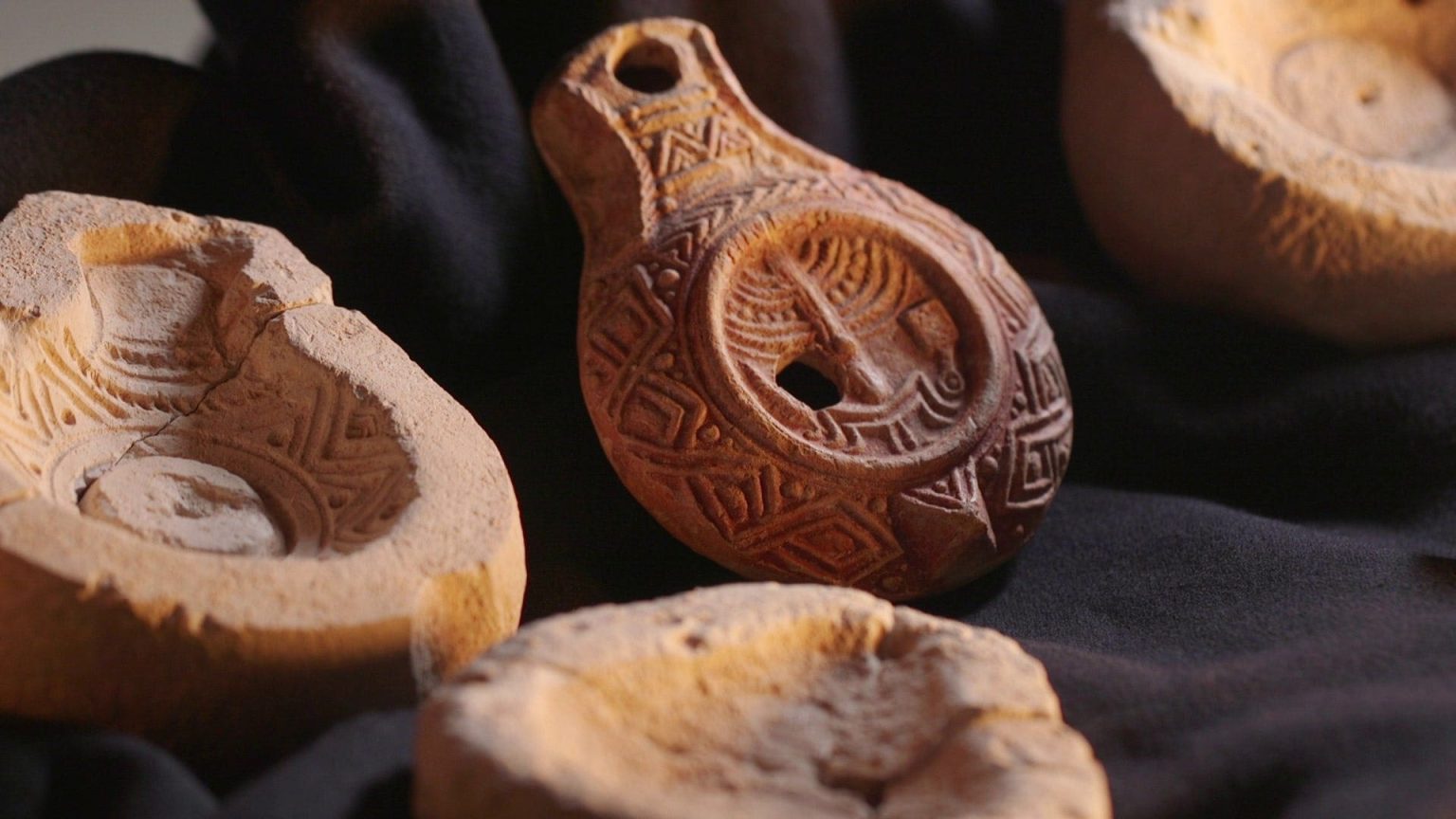Israeli officials recently announced the discovery of an unusual oil lamp dating back to the fourth century. The oil lamp, found near the Mount of Olives in Jerusalem, dates back to the Late Roman Empire. It contains depictions of symbols associated with the Second Temple, even though it was created over 200 years after the temple’s destruction in 70 A.D. Archaeologists also found soot marks from the last time the lamp was used, nearly two millennia ago. The artistic workmanship of the lamp makes it extremely rare, shedding light on Jewish cultural and religious life during the period.
During the Late Roman Empire, Christianity became the favored religion, leading to the abandonment of Roman polytheism. Despite this, there were still a significant number of Jews in Israel facing persecution by the Romans. The oil lamp discovery is particularly surprising as very little is known about Jews living in Jerusalem during the fourth century. After the Bar Kokhba rebellion, Jews were expelled from the city, making the Mount of Olives lamp one of the few material traces of a Jewish presence in the area during the 3rd-5th centuries CE.
The craftsmanship of the oil lamp suggests that the creator dedicated a significant amount of time and effort to its decoration. Delicately and intricately carved limestone molds were used to make the lamp, revealing the skill and artistry of the craftsman. The lamp would have likely belonged to a Jew who purchased it for its religious affiliation and as a memorial to the Temple. The public display of the lamp at the Jay and Jeanie Schottenstein National Campus for Archaeology in Jerusalem provides an opportunity for the public to view this ancient artifact.
The discovery of the oil lamp sheds light on Jewish cultural and religious life during the Late Roman Empire and provides insight into the Jewish presence in Jerusalem during the 3rd-5th centuries CE. The symbols depicted on the lamp, including the menorah, incense shovel, and lulav, are associated with the Second Temple, highlighting the Jewish connection to the Temple. The soot marks on the lamp indicate the last time it was used, giving archaeologists a glimpse into the past and providing a fascinating glimpse into Jewish life nearly two millennia ago.
The artifact represents a rare and unique find due to its exquisite artistic workmanship and historical significance. The oil lamp was most likely used by a Jew living in Jerusalem around the fourth century and provides a tangible connection to the past. The public display of the lamp at the newly built Jay and Jeanie Schottenstein National Campus for Archaeology allows visitors to learn more about the history and culture of the area. Overall, the discovery of the oil lamp adds to our understanding of Jewish life in Jerusalem during the late Roman Empire and offers a glimpse into the religious practices of the time.
In conclusion, the recent discovery of the oil lamp dating back to the late Roman Empire near the Mount of Olives in Jerusalem sheds light on Jewish cultural and religious life during this period. The symbolism depicted on the lamp, as well as the craftsmanship involved in its creation, provide valuable insights into the Jewish presence in Jerusalem during the 3rd-5th centuries CE. The public display of the lamp allows visitors to connect with this ancient artifact and learn more about the history and culture of the area.













